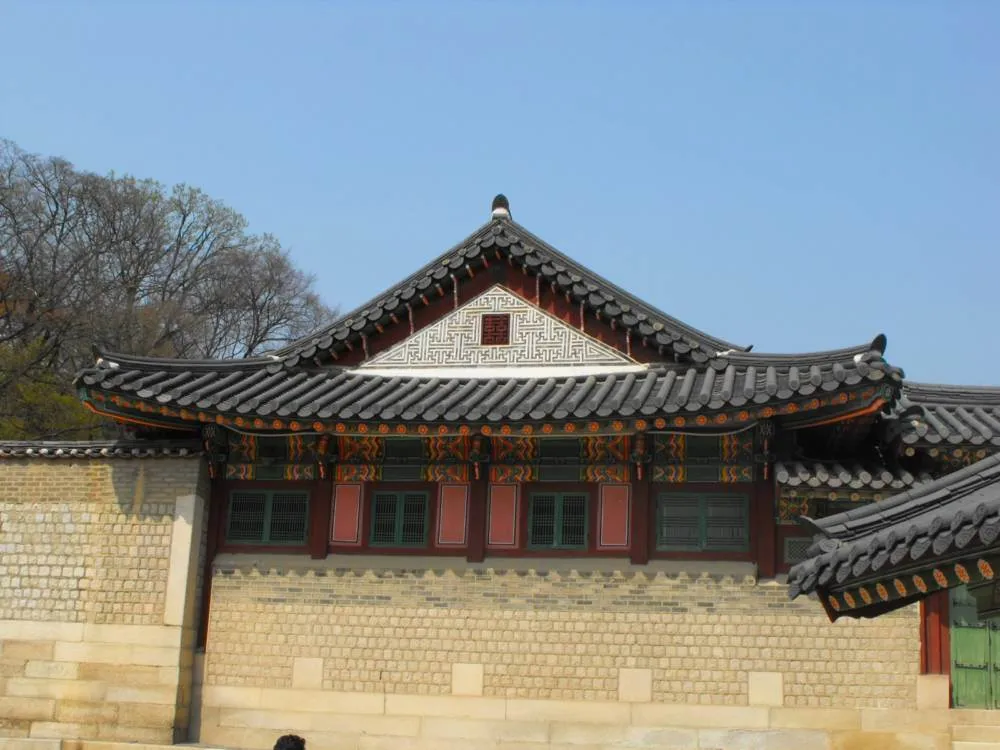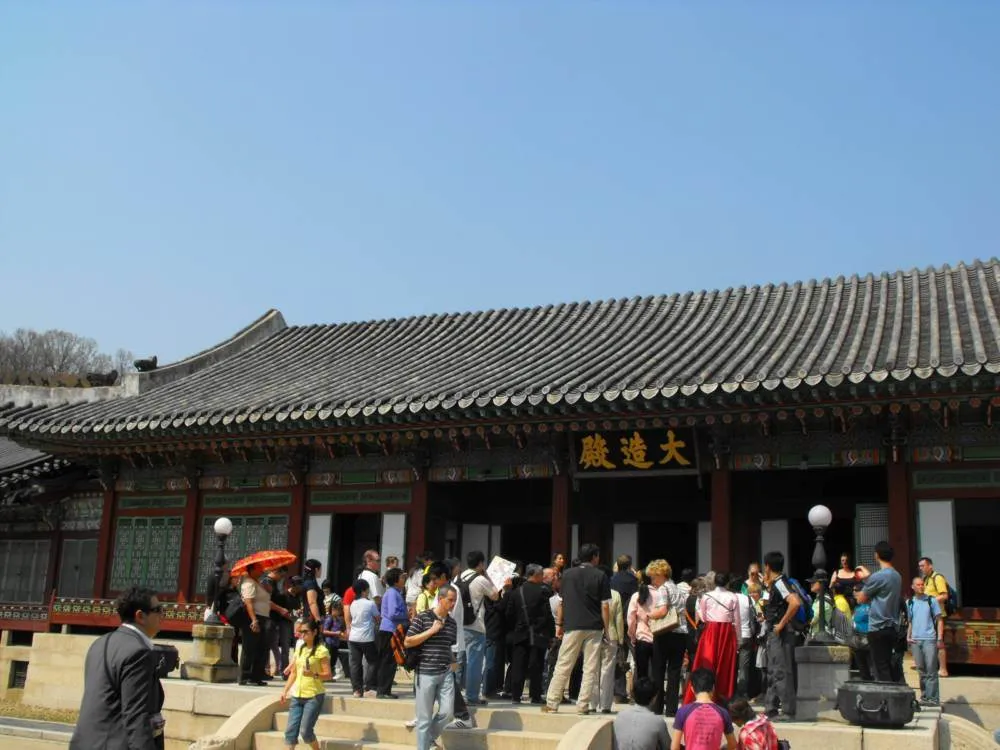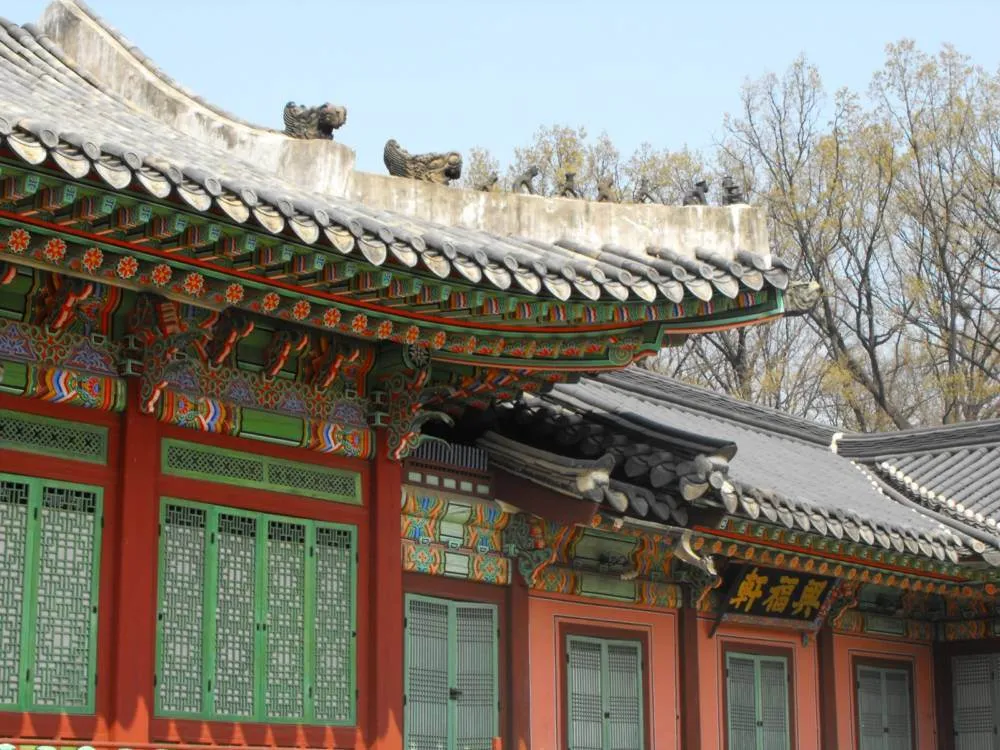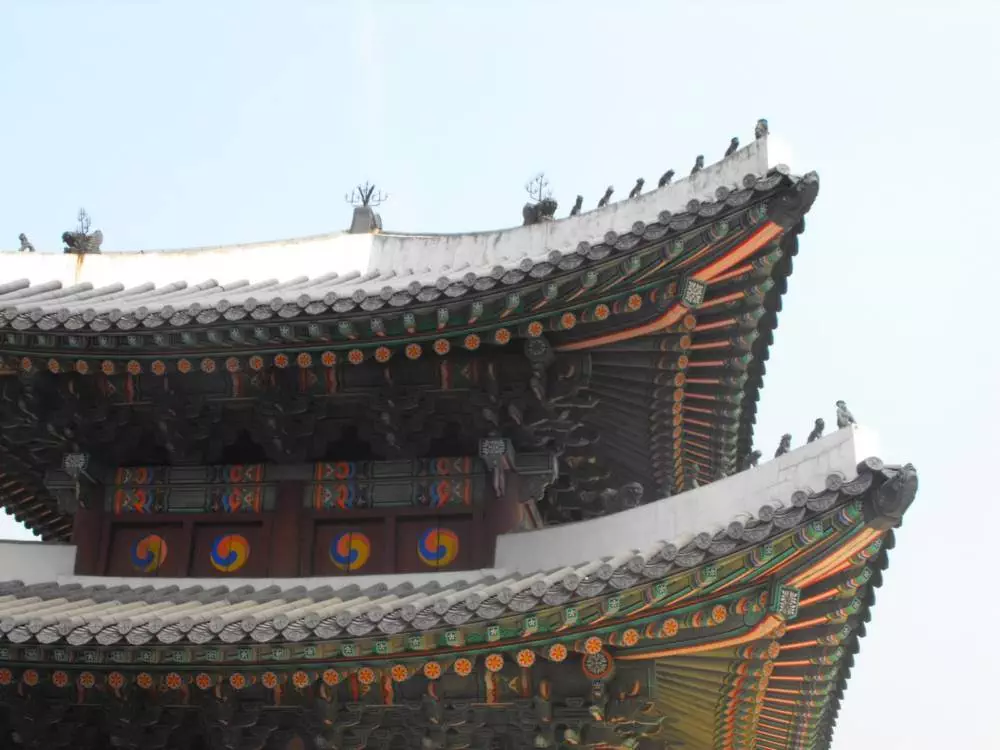
창덕궁 (Changdeokgung) was originally built as a secondary palace to Gyeongbokgung in 1405. Although King Taejong explained the main palace’s topography was not auspicious enough, it’s also possible he didn’t want to live in the main palace after he assassinated his half brothers to take the throne. Hey, when you’re the king, you get to choose where you live.
As seems too common in Korean history, the palace was destroyed during the Japanese invasion in 1592, rebuilt in 1610 and served as the main palace of the Joseon dynasty for over two centuries. An altar was created in 1704, and the Royal Library was constructed in 1776. During the twentieth century the palace was damaged by the Japanese and after the demise of the Joseon dynasty; restoration began in 1991, and continues to this day. In it’s current state it’s quite unique – and shows a lot of Western influences in the process.
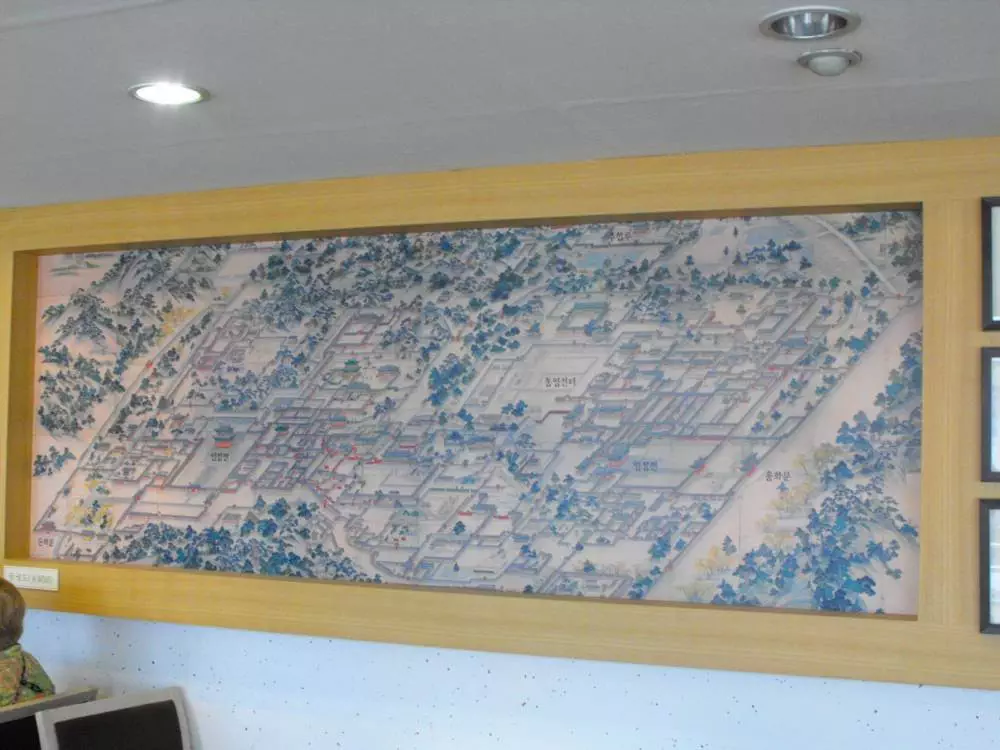
Next to the ticket office is a souvenir shop and coffee shop, where a replica of a map drawn of Changdeokgung and Gyeongbokgung hangs. The original was drawn sometime between 1826 and 1830 and shows the buildings, bridges, walls, and even building names.
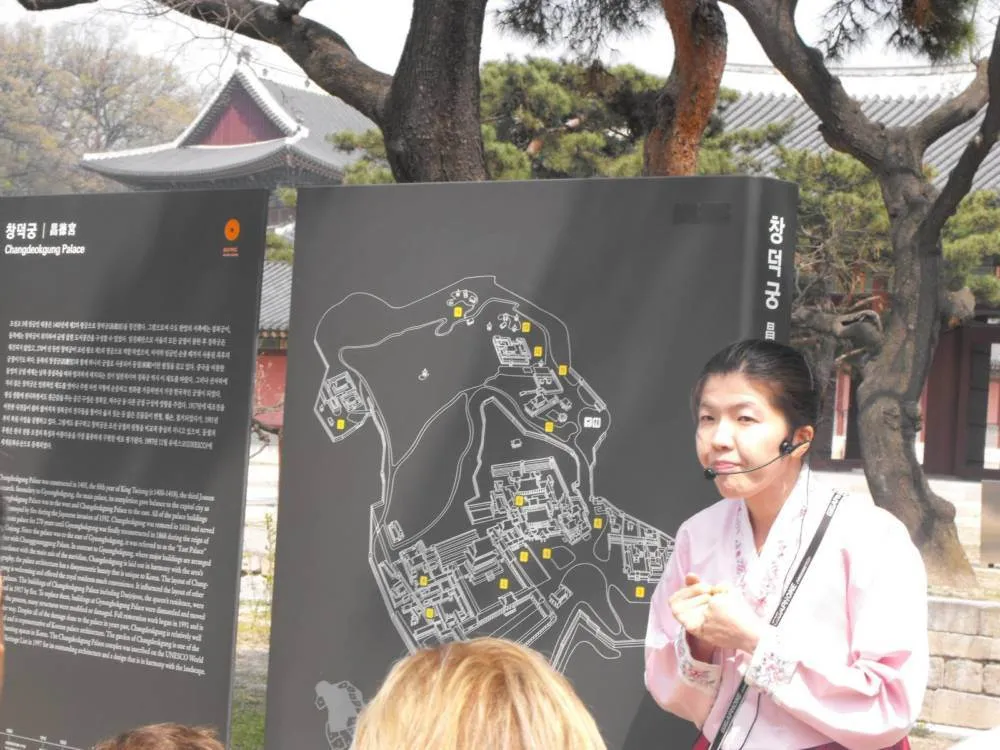
Our fearless leader / tour guide. While her English was fair, it was rather hard to hear her amongst the typical tourist talk and the majority of tourists taking pictures. Since this was a tour in the afternoon, virtually all of the foreigners on the tour were tourists (I keep a quirky work schedule that gives me afternoons off).
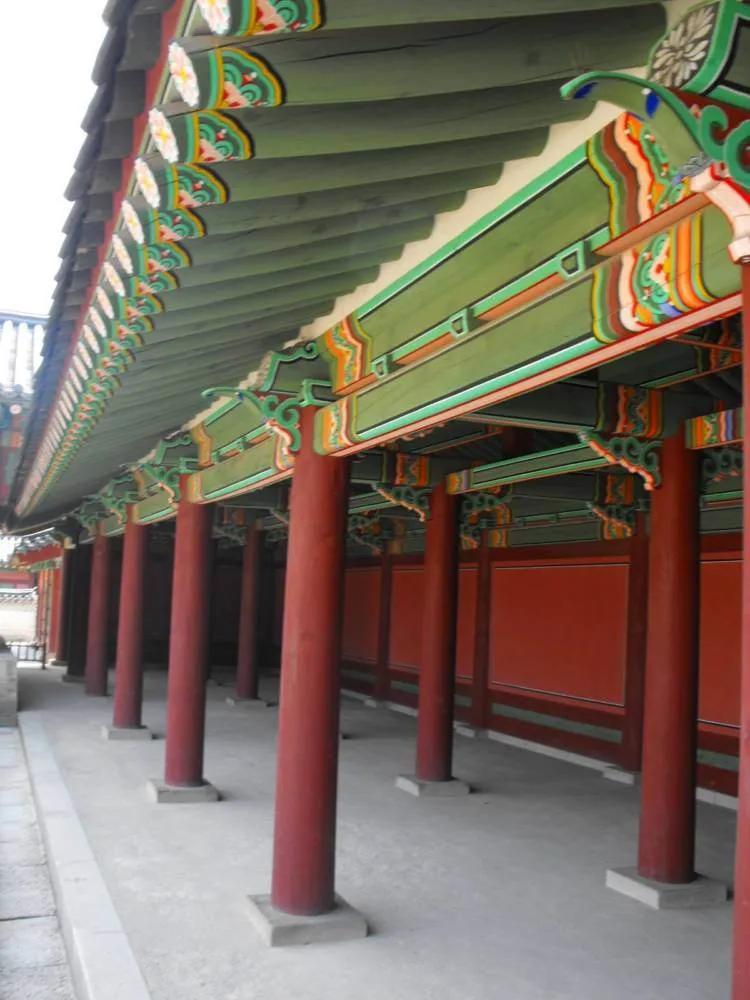
Looking down the side of Jinseonmun, the entrance to the rest of the temple.
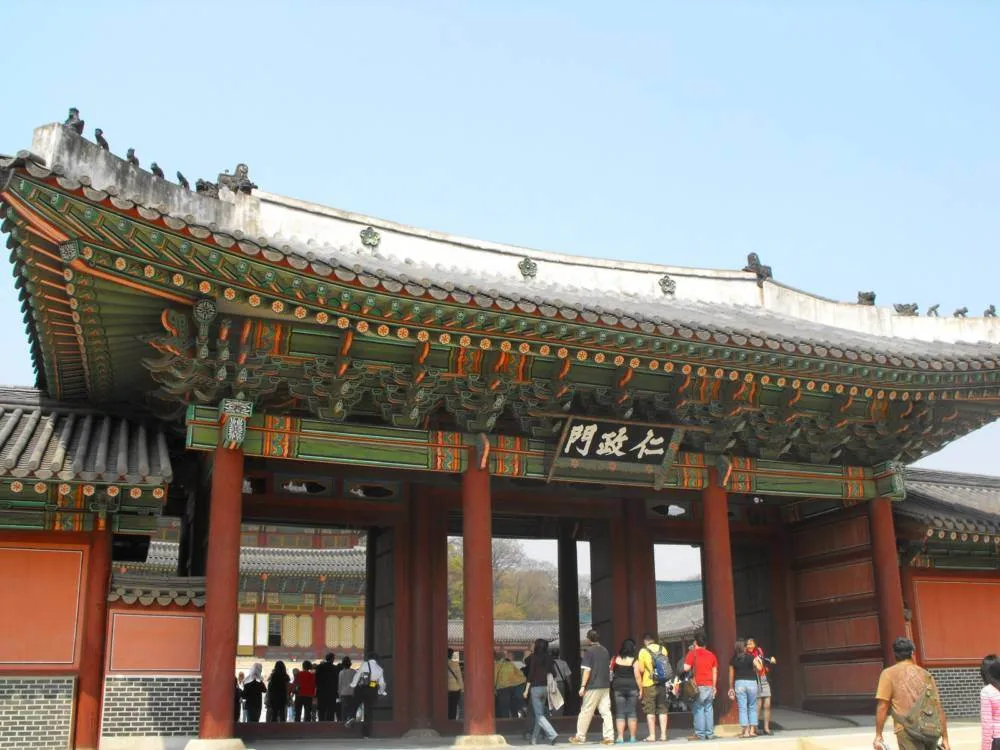
Donhwamun, yet another gate to walk through. Our tour guide informed us that the throne hall was next:
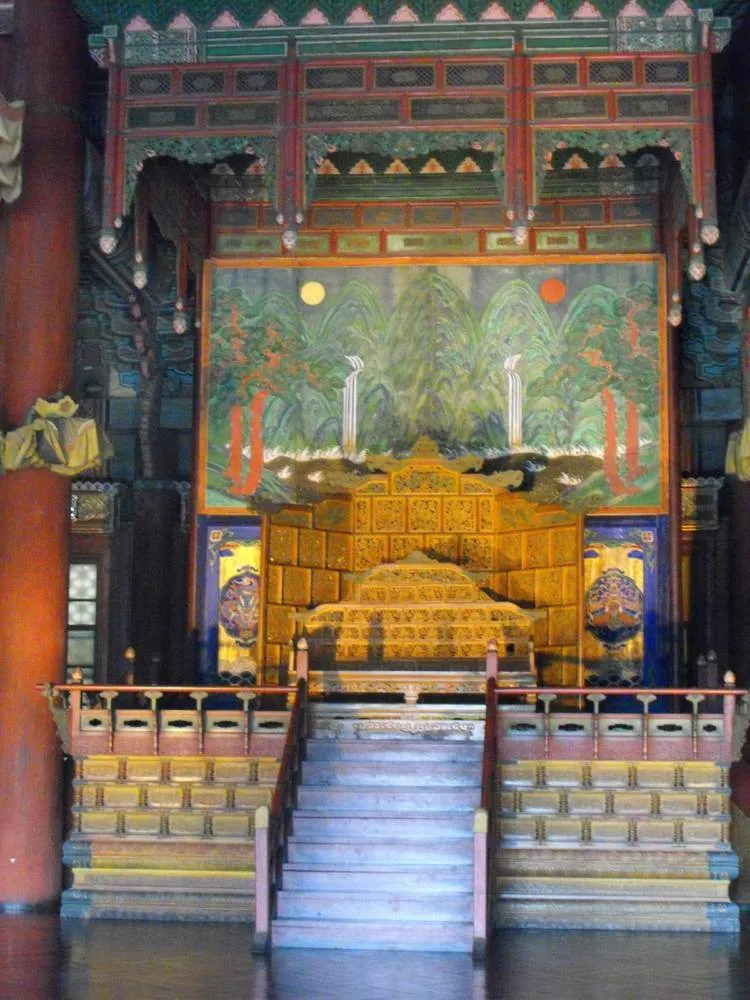
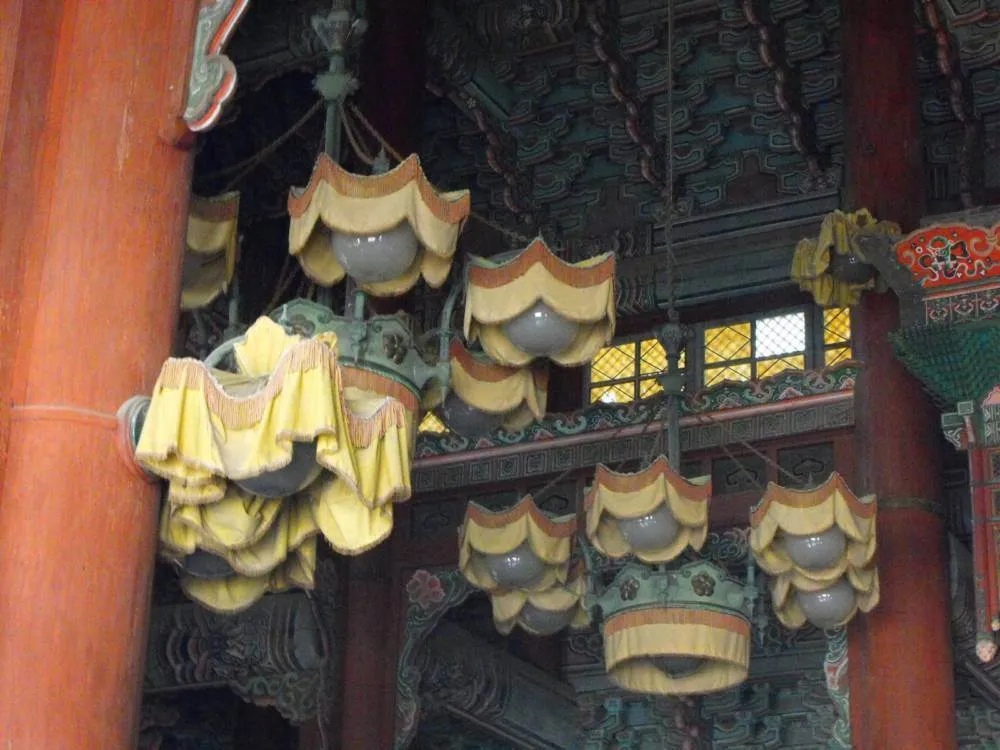
Not quite crystal chandeliers, but still beautiful – and some evidence of the Western influence on the palace.
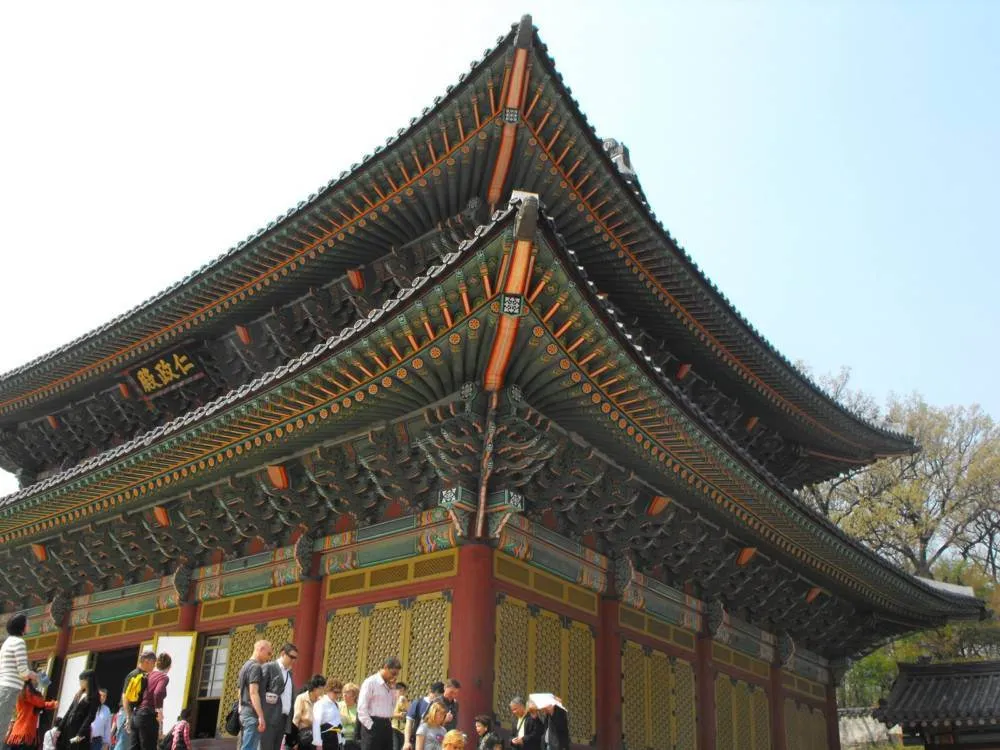
A nice look up at the outside of the throne hall – and the throngs of tourists…
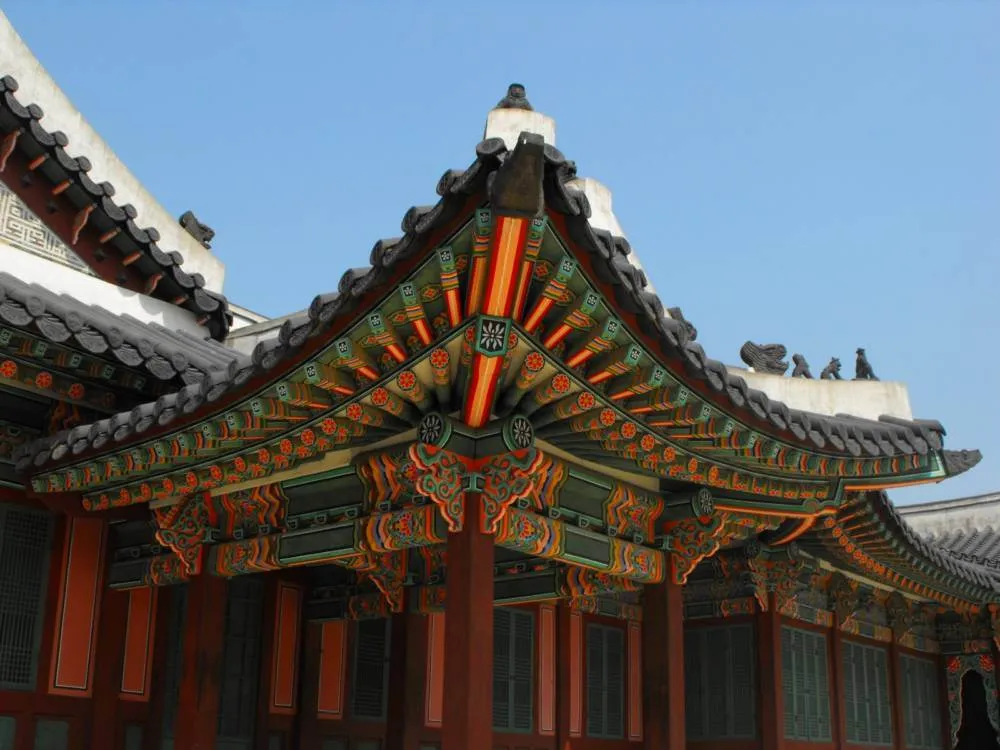
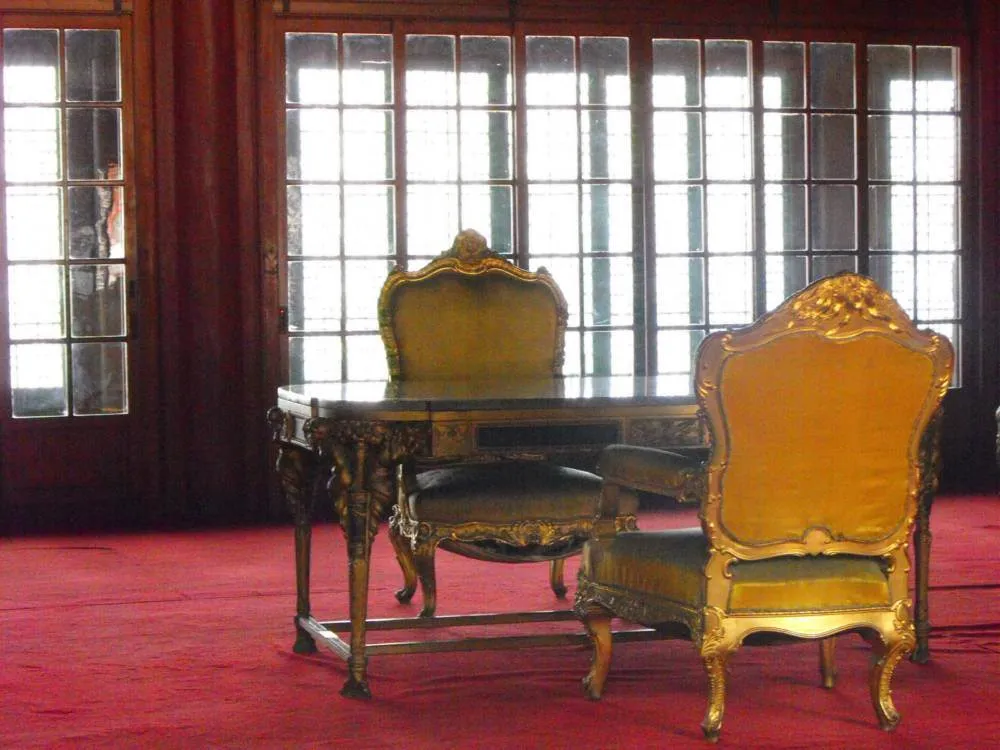
Seonjeongjeon – where the king would handle routine state affairs or other symbolic duties. Imagine this as your office while the aforementioned throne hall was saved for your ceremonial duties.
Huijeongdang – originally the King’s bed chamber, it was where more work actually got done when the previously mentioned Seonjeongjeon was outgrown.
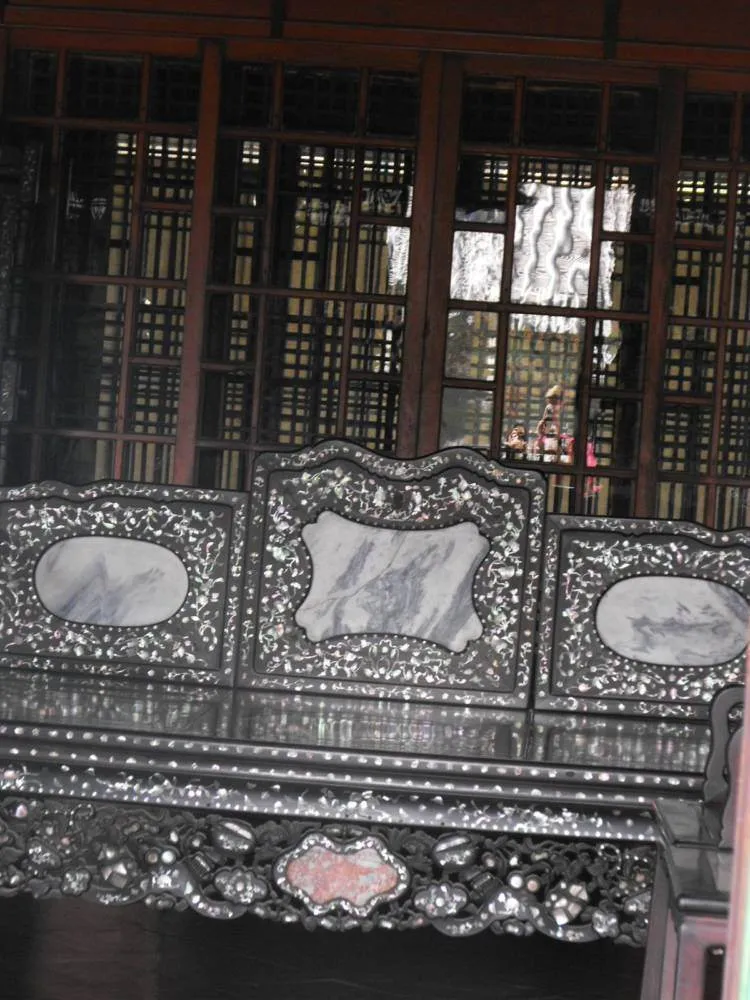
Gotta love mother of pearl furniture.
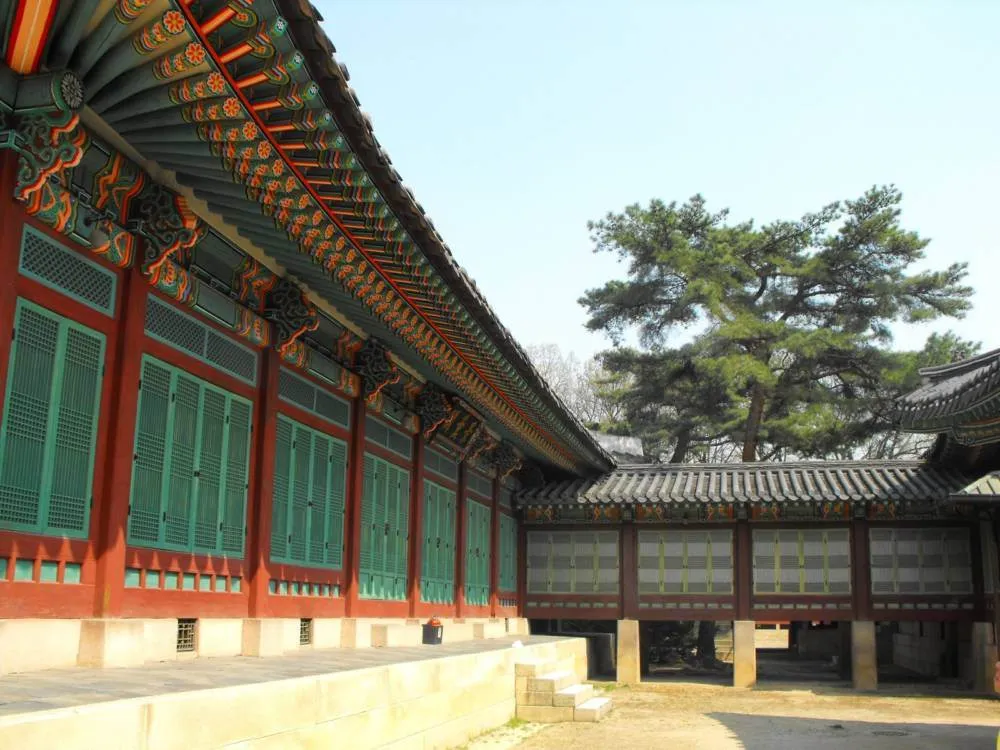
Daejojeon, also known as the residence of the queen. There’s more than just one building here – corridors connected one building to another and made a much larger building as a result.
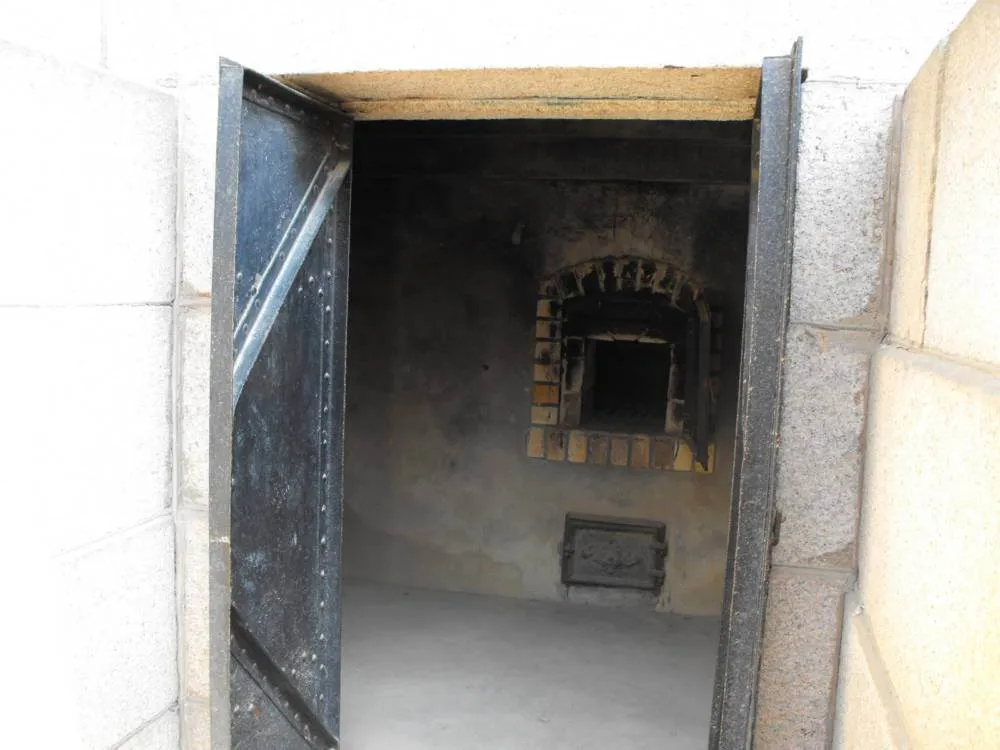
A very small entrance to a fireplace (the door was no more than a meter tall!).
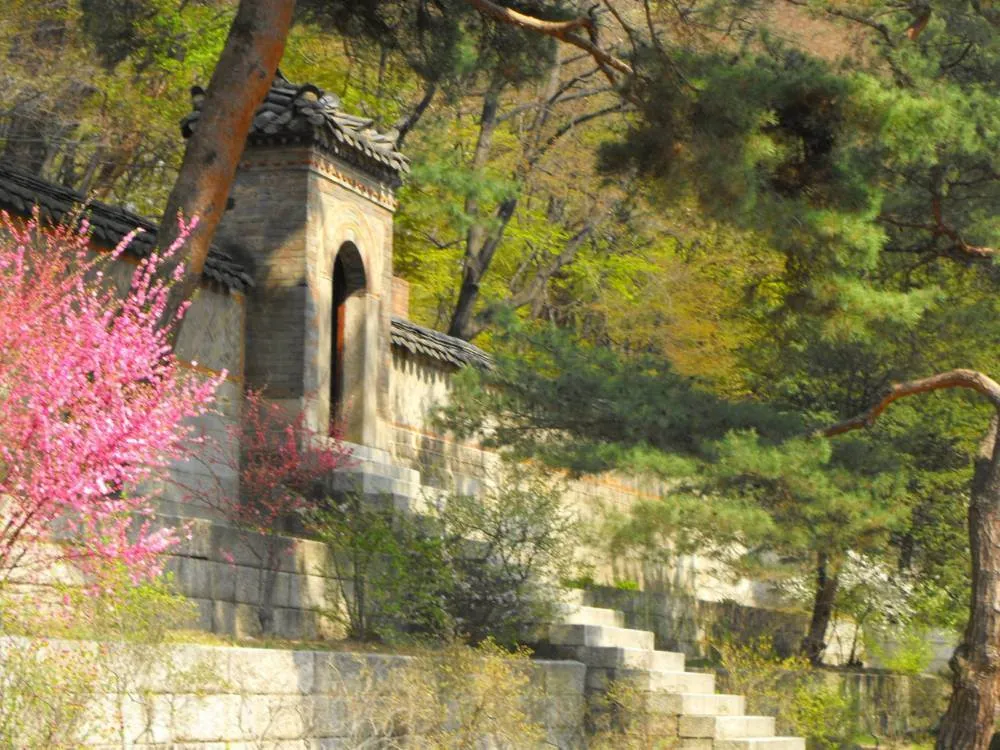
A staircase leads up as we rounding the back wall – not sure where the stairs lead, though the area didn’t look open to the public.
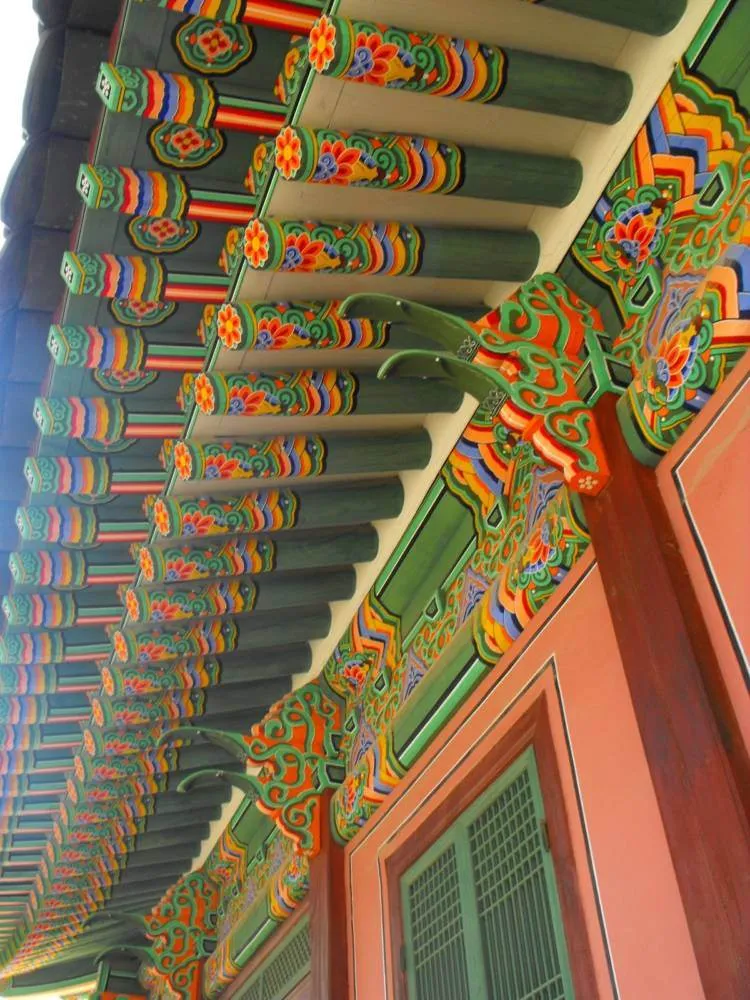
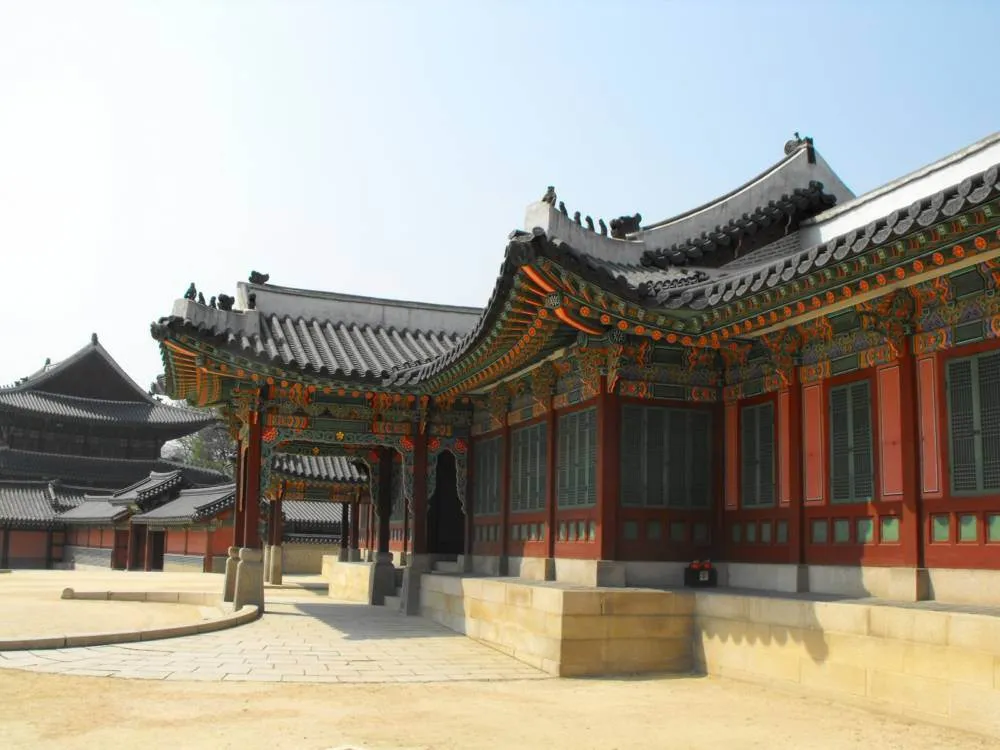
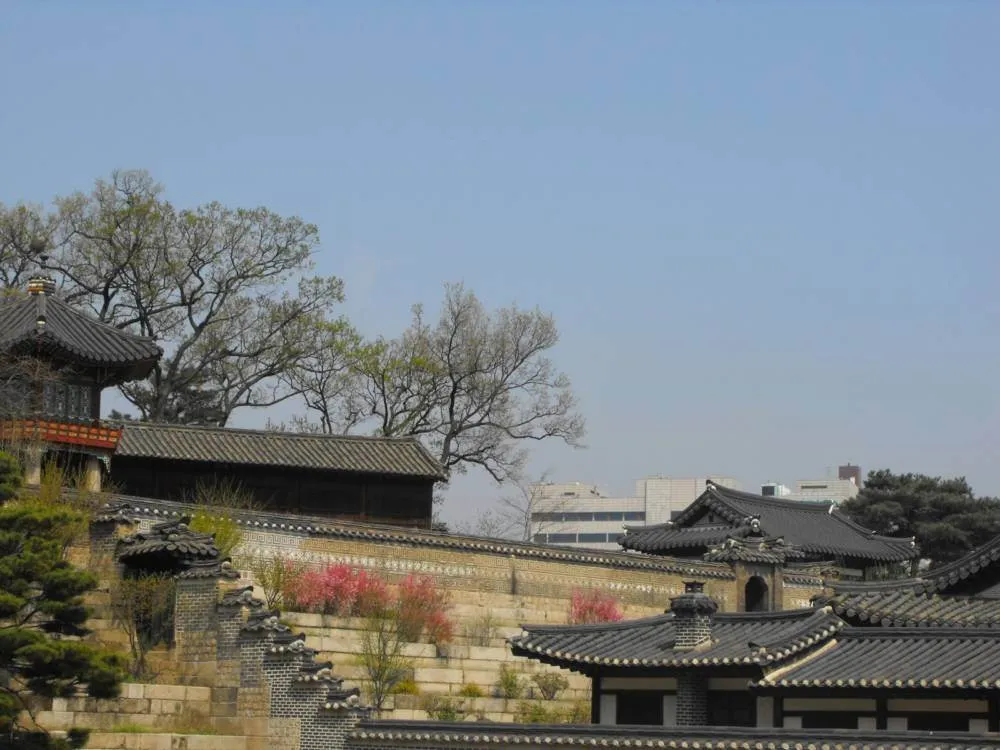
Nakseonjae – the beginning of our guided tour towards the Secret Garden. The area earned the ‘Secret Garden’ from only being accessible by the royal family during their reign, where they enjoyed everything Although portions of the garden are off-limits due to security reasons, there’s more than enough to see:
Quite a few cherry blossoms in the area – and one really handsome guy.
An interesting design going from one room to the next.
Before assuming a garden is all about plants, this particular garden mixes in buildings with the gardens in every gulley.
The pond is called Aeryeonji, meaning ‘love of lotuses’, and was originally created in 1629 by King Sukjong. According to the palace booklet, the king once said, “I love the lotus because it blooms with such clean and beautiful flowers, however dirty the water may be, latently possessing the virtue of a true gentleman.” If there’s one thing that hasn’t changed, it’s that dirty water look… Not pictured were a few fish swimming in the pond or the nearby souvenir shop and restrooms where our tour reached a breaking point.
Juhamnu pavilion – Facing the aforementioned pond but blocked to the public. One purpose was to serve as the Royal Library – imagine relaxing over your favorite book nearby your private pond…
Climbing a few stairs to walk around towards the entrance – some nice areas to walk around in, although not much to take pictures of since few of the trees have sprouted full-fledged leafs yet.
In 1997 this palace was added to UNESCO’s World Cultural Heritage List for it’s “unique palatial layout, it’s exquisite buildings, and the landscaping of the rear garden”. In other words, it’s a unique addition to the world’s heritage – and a boon for tourists seeking the epitome of Korean architecture.
In all, the guided tour felt a little stuffy – I wanted to get off the beaten trail and explore, but security guards trailing the tours ensured they stayed roughly together. On one level it does help keep the place pristine, but I’ve yet to see that level of ‘care’ at any other tourist sights in Seoul. If you don’t mind paying the extra money (see below), go on a Thursday – the only day self-guided tours are allowed. Either way you go, it is a unique sight, and shouldn’t be missed during your time in Korea.
Directions to Changdeokgung: Take line 3 of the Seoul subway system to the Anguk station. Take exit 3 to street level, then walk straight for about 400 meters until you see the palace wall on your left. You MUST join a guided tour to enter on every day but Thursday (admission 3,000 won). English tours are offered at 11:30am, 1:30pm, and 3:30pm, last about 1 1/2 hours and are 2 km long. On Thursdays, non-guided tours are available for 15,000 won per adult (!) but allow you to roam to your heart’s extent. Closed on Mondays; wheelchair accessible.

